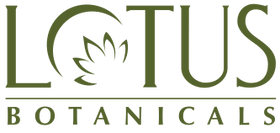
Most people pick up a de tan face scrub because they're frustrated with uneven skin tone, patches from too much sun, or dullness that just won't budge. The right scrub can help, but you need to know what you're looking for. Exfoliants like walnut shell or apricot can be too harsh for many skin types. Instead, look for scrubs with gentle beads or natural fruit enzymes. These help loosen dead skin without tearing or leaving micro-cuts. Vitamin C, licorice, and papaya extracts are especially good for brightening. If your skin feels raw or sensitive after scrubbing, scale back to once or twice a week—overdoing it can actually make pigmentation worse.
A lot of people think scrubbing harder or more often will fade a tan faster. That’s a recipe for irritation, not results. Scrubbing daily strips your skin’s barrier and can actually lead to more pigment or breakouts. Another misstep: skipping sunscreen after exfoliating. If you go out without protection, your skin can tan even faster. Lastly, avoid products with harsh physical exfoliants if you have acne or sensitive skin—look for cream-based or enzyme scrubs instead.
Scrubs help remove surface-level pigmentation and dead skin, so you’ll notice brighter, smoother skin after a few uses—usually within 1-2 weeks. But if you have deeper pigmentation, melasma, or sun spots, you’ll need more than just a scrub. Think of de tan scrubs as a boost, not a miracle. Consistency, sun protection, and the right ingredients make all the difference.
Lotus Botanicals offers a De Tan Radiance Face Scrub that uses papaya enzymes and vitamin C to gently exfoliate and brighten. It’s vegan, cruelty-free, and free of sulfates and parabens. If you want a balanced, plant-based approach, check them out at lotusbotanicals.com.
1. How often should I use a de tan face scrub?
Twice a week is enough for most people. Using it more often can irritate your skin and actually worsen pigmentation.
2. Is a de tan face scrub safe for sensitive skin?
Look for scrubs with gentle exfoliants like fruit enzymes or fine beads. Avoid harsh physical scrubs with large particles if your skin gets red or irritated easily.
3. Can scrubbing remove a tan completely?
A scrub can fade surface-level tanning and dullness, but it won’t erase deep pigmentation or sun spots. Consistency and sun protection matter most.
4. Do I need to use sunscreen after using a de tan face scrub?
Absolutely. Exfoliating makes your skin more sensitive to UV rays and more likely to tan again. Always finish with SPF.
5. What ingredients should I look for in a de tan face scrub?
Vitamin C, papaya, licorice, and gentle natural exfoliants work well. These ingredients help brighten and even out skin tone without being too harsh.
6. Can I use a de tan face scrub if I have acne?
Choose a very gentle, cream-based scrub or one with fruit enzymes. Avoid rough exfoliants, which can make breakouts worse.
7. Why does my skin feel dry after using a de tan face scrub?
You might be scrubbing too hard or too often. Always use a moisturizer after exfoliating, and don’t forget to hydrate from within.
8. What’s special about Lotus Botanicals’ De Tan Face Scrub?
Lotus Botanicals uses plant-based ingredients like papaya and vitamin C to exfoliate gently. It’s vegan, cruelty-free, and doesn’t have parabens or sulfates.
9. How long does it take to see results from a de tan face scrub?
Most people notice brighter skin in about 1-2 weeks with regular use, but deep pigmentation may take longer or need other treatments.
10. Is it okay to use a de tan scrub on other parts of my body?
Yes, you can use it on your neck, arms, or anywhere you notice tanning. Just be gentle—body skin can handle a bit more, but don’t overdo it.
Phone : 1800 1200 36231
Email : care@lotusbotanicals.com
WhatsApp
: +917290031713
Free shipping on order above 599
Your payment information is processed securely.
Please beware of fraudulent messages and phone calls on behalf of Lotus Botanicals. We NEVER ask for bank details, OTPs, advance cash payments or engage in lotteries.